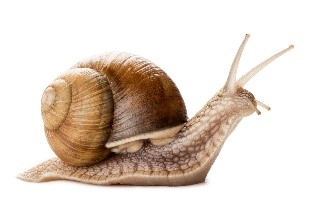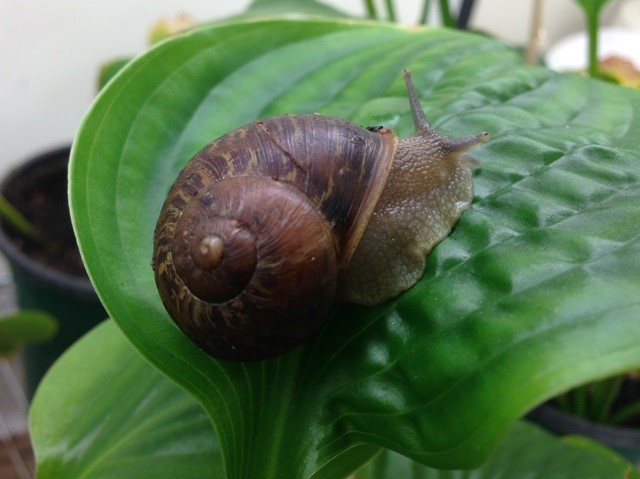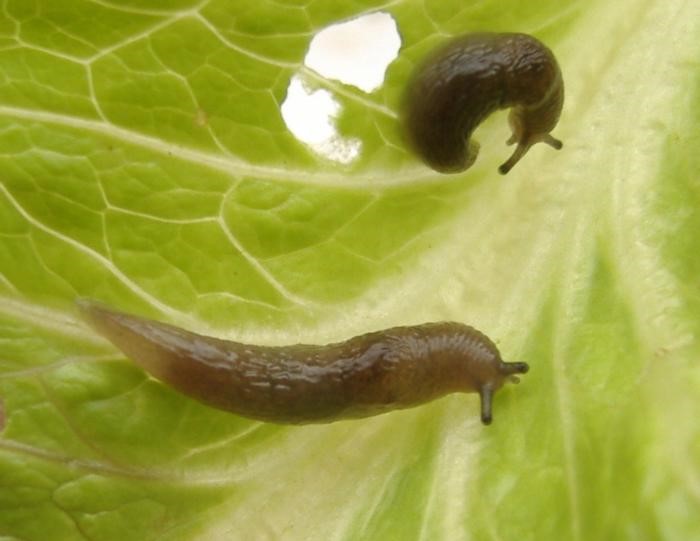
Snails and slugs are common garden invaders that live in California and across the United States. If you have a vegetable garden or grow fruits around your home, you know how much effort it takes to maintain plants. Among the threats of common garden pests, snails and slugs are of top concern. Once snails and slugs reach your plants, they ruin them by eating and creating holes. As part of a proper lawn care program, snail and slug control should always be top of mind.
What kind of snails and slugs live in California?
The most common snails that live in gardens in our area are brown garden snails and amber snails. Common slugs include the three-banded garden slug, tramp slug, gray field slug, garden slug, and greenhouse slugs. You can tell snails apart from slugs by their large, swirling shell. Most snail shells range between 0.75-1.6 inches. Their color varies by species, from brown to gray and yellow.

Slugs are typically between 1.5-3 inches long, with a cylindrical body that contracts and expands as it moves. They leave behind a slimy trace behind while they navigate around your property at night. Because they don’t have a protective shell like snails do, slugs have to hide within soil to keep cool and out of sight from predators.
What’s the difference between snails and slugs?

Both snails and slugs are mollusks, not insects. Snails aren’t like hermit crabs that can independently leave their shells. A lot of their body and organs are stored up within the shell, which causes the shell not be become removable. What you see outside of the shell is their main mode of transportation.
Did you know that some slugs have shells? A small shell can be located under the surface of their body that’s no visible to the human eye. Unlike snails that can retract into their shell when the weather is sunny, slugs need to live within moist, cool soil to survive, only surfacing at night.
What attracts snails and slugs to my home?
Snails and slugs feed off of succulents, basil, beans, cabbage, dahlia, delphinium, hosta, lettuce, marigolds, strawberries, and many other vegetable plants. The result is serious damage that is often beyond repair. Your once thriving vegetable garden can be brought to an abrupt halt once snails and slugs get a hold of them.
Because snails and slugs are nocturnal, hiding spaces are key to their survival during the daylight hours. The most common place that you’ll find snails and slugs is within moist soil and amongst brush including low-lying branches and ivy. If you have these conditions around your property, the possibility of a snail or slug infestation is possible.
Are snails and slugs dangerous?
Snails and slugs are not dangerous towards humans. They do not bite or cause structural damage to homes like carpenter ants or termites do. If your pet eats a slug or the slime that they produce, there is a possibility for disease transmission, although the risk is low. Snails and slugs are nocturnal, so you probably won’t come into contact with them to begin with.
The biggest threat that snail and slugs pose is towards ornamental plants, fruits, and vegetables. They can cause giant holes in leaves and destroying fruits.
How can I prevent snails and slugs from living on my property?
The best way to keep snails and slugs away is to make an environment that is unappealing to them.
- Choose the right plants: Many plants resist snail and slug damage including begonias, California poppy, fuchsias, geraniums, impatiens, lantana, nasturtiums, and purple robe cup flower as well as many plants with stiff leaves and highly scented foliage such as lavender, rosemary, and sage. Most ornamental, woody plants, and ornamental grasses also aren’t seriously affected.
- Eliminate natural hiding places: Clear boards, stones, debris, weedy areas around tree trunks, leafy branches growing close to the ground, and dense ground covers such as ivy are ideal sheltering spots.
- Don’t overwater: Snails and slugs thrive in moist soil. By only watering plants as needed, you can avoid creating an environment conducive to snail and slugs.
The best way to prevent snails and slugs and to get rid of a current snail or slug issue is to contact AAI Pest Control. Our professional snail and slug control in addition to a suite of lawn care services can ensure that your yard and garden are protected year-round. Call us or fill out the contact form on this page to get started!
What Are Snails & Slugs Professional Pest Control Services in Tracy CA?
Serving Northern California
